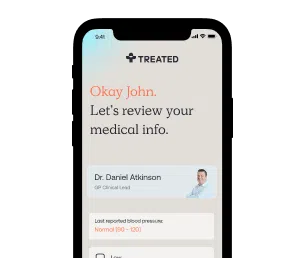Daily drops for itchy, inflamed eyes.


Allergic conjunctivitis (allergy symptoms in your eyes) can be uncomfortable and provide a barrier to your everyday life.
If you need relief from red, puffy and irritated eyes, order Opticrom online with us for a proven treatment alongside expert advice.
Opticrom is an allergy treatment that’s used to stop, relieve and tackle allergic conjunctivitis - uncomfortable allergy symptoms which tend to affect both of your eyes at the same time. Allergic conjunctivitis is thought to affect between 15%-40% of the population, with ‘seasonal’ allergic conjunctivitis making up more than half of those cases. Seasonal allergic conjunctivitis usually refers to hay fever, as it only normally affects people at certain times of the year (when the pollen count is high).
Year-round (perennial) allergic conjunctivitis, though, is often triggered by environmental allergens that are present throughout the year, such as animal fur or dust mites. These are present throughout the year - often making it a more persistent and chronic condition. Redness, itching, swelling (particularly of the eyelids), tears and stringy discharge are common symptoms of allergic conjunctivitis. Your eyes will probably feel uncomfortable and sore, as well.
Allergic reactions occur when your body wrongly perceives a ‘trigger’ (allergen) to be a threat. It then produces a chemical called histamine in order to fight the substance, which causes your typical uncomfortable allergy symptoms.
Opticrom works by reducing the amount of histamine from being released by your eye - easing your symptoms as a result.
Opticrom is only available in one dose: 2% w/v, but the amount of it you use per day may vary, depending on the instructions of our clinician. If it’s not working to ease your symptoms at the maximum daily dose, you might need to try an alternative treatment.

How we source info.
When we present you with stats, data, opinion or a consensus, we’ll tell you where this came from. And we’ll only present data as clinically reliable if it’s come from a reputable source, such as a state or government-funded health body, a peer-reviewed medical journal, or a recognised analytics or data body. Read more in our editorial policy.

How we source info.
When we present you with stats, data, opinion or a consensus, we’ll tell you where this came from. And we’ll only present data as clinically reliable if it’s come from a reputable source, such as a state or government-funded health body, a peer-reviewed medical journal, or a recognised analytics or data body. Read more in our editorial policy.
Have something specific you want to know? Search our info below, or ask our experts a question if you can’t find what you’re looking for.
Management of seasonal allergic conjunctivitis: guide to therapy. Acta Ophthalmologica, 90(5), pp.399–407.
Allergic conjunctivitis: Update on pathophysiology and prospects for future treatment. Journal of Allergy and Clinical Immunology, [online] 115(1), pp.118–122.

Registered with GMC (No. 4624794)
Meet Daniel
Registered with GPhC (No. 2202465)
Meet Sanjeda
Registered with GPhC (No. 2070724)
Meet CraigDelivery, consultation, treatment. It’s all included in the price.
| Quantity | Starting from |
|---|---|
| 10 ml | £28.95 |
| 20 ml | £44.95 Save £12.95 |
| 30 ml | £58.95 Save £27.90 |
| Quantity | Starting from |
|---|---|
| 8 ml | £44.95 |
| Quantity | Starting from |
|---|---|
| 13 ml | £41.95 |
| 27 ml | £66.95 Save £20.18 |
| 40 ml | £94.95 Save £34.13 |
We know health, but you know you.
Our experts tell you what’s safe, but you decide what’s best.
Answer a few questions and tell us about yourself. Get tailored advice from our clinicians so you can choose better.

Choose your treatment and how often you have it delivered.

We know things change. It’s the nature of life. We’ll check in regularly to make sure your treatment is still right for you.
Pause. Change. Skip. Start again. Any time you like.
Always arrives on time and I’m kept informed of progress.
I have had it previously from my G.P so It worked as expected, extremely well. My problem is an accessing my G.P practice, they put ED well down their list of priorities. I found your service excellent, quick and efficient. I fully intend to continue using it
Shipping is speedy and the product is amazing.
Fast, slick service. Very easy to amend subscription when required.
All good.
Great service
Really helped me
Trusted service and great service - next day delivery and I can rely on them to send regularly.
Ordering was straight forward, tablets delivered promptly and well packaged, and instructions were clear, thanks.
100% recomended.Great service
Excellent service
Excellent delivery. Can’t fault.
Quick and efficient service, delivered discreetly the next day. Thank you.
Effective
Great service, no wait time
Great
Quick assessing for medicine suitability. Quick delivery and good communication throughout.
Straightforward and quick service!
Good however communication could sometimes be better
Easy and good procedure to get treatment
Excellent product
Excellent service!!! Ordered what I needed sent a picture of my prescription and the parcel arrived the next day!!! Will definitely order again and have recommended to others!!!
Fast shipping
Very quick service all round
So quick and simple. Recommend
Great
Very convenient hassle free service.
Easy to use good communication and fast shipping
Great service
Efficient no issues re delivery
Fabulous service
Brilliant service. Not a bad word to say!
It was fast, professional and it's the right med for what I selected in there.
This review requires content. Oh well..
Great service, quite effortless.
Top notch
Brill service
N/a
Excellent service quick and easy to use
Fast and exact order
Superb service and quick delivery 10/10
Excellent service
Thank you for fast delivery
Shipping is extremely quick and satisfiying
Good stuff
Good service
Great fast delivery
Allergic conjunctivitis: Here are some other options.
Branded antihistamine treatment for allergic conjunctivitis and hay fever.
Generic drops that help to ease red, puffy eyes.
We're making healthcare more about you. Sign up to our newsletter for personalised health articles that make a difference.
Disclaimer: The information provided on this page is not a substitute for professional medical advice, diagnosis, or treatment. If you have any questions or concerns about your health, please talk to a doctor.
We couldn't find what you're looking for.
Here's everything we treat. Or, if you're looking for something we don't have yet, you can suggest something.
If there’s a particular treatment or condition you’re looking for, tell us and we’ll look into it for you.
Submit your question here, or tell us if you’ve found an issue on our site.
We’ll get back to you very soon. We aim to respond to all queries in one working day.
You’re signed up to our newsletter. Keep an eye on your inbox for our latest update.
By clicking 'Subscribe now' you're agreeing to our Privacy Policy.
We’ve sent you an email asking you to confirm your email address.